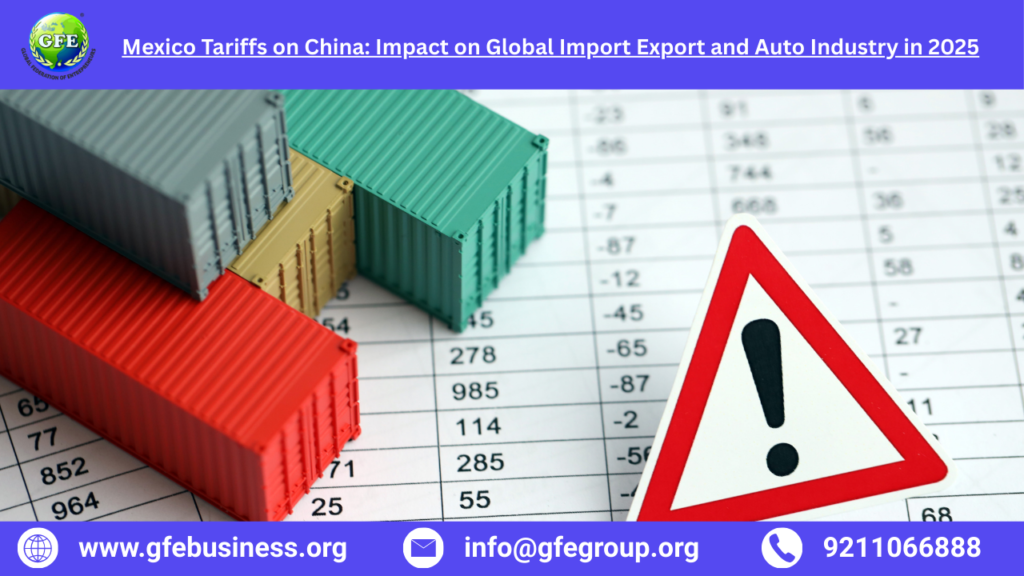GFE Business brings you the latest insights into global trade policies that are reshaping markets. One of the biggest developments in 2025 is Mexico’s tariffs on Chinese goods, especially in the automobile and manufacturing sectors. This move has created ripple effects across the global import export ecosystem and opened new opportunities for countries like India.
In this blog, we’ll analyze the impact of Mexico’s tariffs on China, the shifting dynamics of the auto industry, and how businesses can strategically position themselves in the global market.
Why Mexico Imposed Tariffs on China in 2025
Mexico’s decision to impose tariffs on Chinese imports is tied to:
Protecting domestic industries from cheaper Chinese products.
Balancing trade relations with the United States under the USMCA framework.
Encouraging nearshoring—bringing supply chains closer to North America.
According to World Trade Organization (WTO) reports, tariff barriers are increasingly being used by nations to secure strategic sectors and reduce overdependence on China.
Impact on Global Import Export Businesses
The tariffs have altered trade routes, supply chains, and sourcing strategies:
Shift of Manufacturing to Mexico & Southeast Asia
Many global companies are relocating operations to avoid tariffs, boosting countries like Vietnam, Thailand, and Mexico itself.Rising Opportunities for India
Indian exporters, particularly in auto components, textiles, and electronics, are well-positioned to fill the gap left by Chinese suppliers.Increased Trade Costs
Importers relying heavily on Chinese products now face higher costs, pushing them to seek alternative suppliers.
The Auto Industry: Biggest Sector Affected
The auto industry is at the center of this tariff war:
Chinese EVs and parts now face heavy tariffs in Mexico.
US and Mexican automakers are pressured to diversify sourcing.
Indian auto component exporters stand to gain significantly by offering cost-effective alternatives.
A Reuters analysis suggests that tariffs could accelerate the restructuring of global auto supply chains, making India a key sourcing hub for electric vehicle parts and automotive electronics.
Opportunities for Indian Exporters
For Indian businesses, this trade shift means:
Auto Components – Mexico and US companies may increasingly source from India.
Electronics & Machinery – Indian firms can step into supply chains disrupted by tariffs.
Textiles & Consumer Goods – With rising import costs from China, buyers are open to alternative suppliers.
Exporters should leverage services like GFE Business that provide export business setup, trade compliance, and global expansion strategies to navigate this shift.
Strategies to Leverage This Opportunity
Market Research – Identify sectors in Mexico and the US most affected by tariffs.
Build Strategic Partnerships – Collaborate with distributors and importers in Latin America.
Upgrade Compliance & Standards – Ensure Indian exports meet USMCA regulations.
Digital Trade Platforms – Use e-commerce and digital trade channels to expand reach.
Final Thoughts
Mexico’s tariffs on China in 2025 are more than just a regional trade decision—they are reshaping global import export flows and creating hidden opportunities for Indian exporters, especially in the auto industry.
For businesses willing to adapt, this is the right time to explore new trade routes and global markets. Partnering with experts like GFE Business ensures that exporters can navigate compliance, optimize supply chains, and scale globally in this changing trade environment.








